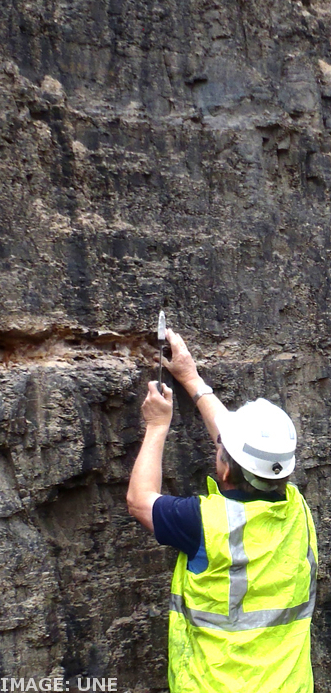Ancient climate study resets coal rock clock
 Volcanic ash all along Eastern Australia is helping researchers learn about climate change and mass extinction during the Permian period, about 250 million years ago.
Volcanic ash all along Eastern Australia is helping researchers learn about climate change and mass extinction during the Permian period, about 250 million years ago.
University of New England’s Professor Ian Metcalfe hopes the project will reveal more about extreme climate-change such as glaciations and global warming.
Permian sedimentary rocks found in the Sydney, Gunnedah and the Bowen basins of eastern Australia show there was catastrophic super-volcano activity happening 250 million years ago.
“They were so frequent Eastern Australia could have been truly be described as the volcanic hell on Earth,” Professor Ian Metcalfe said.
Professor Ian Metcalfe’s international research team hopes it will find vital information on the age and duration of major climate change.
“The presence of multiple tuff layers in the Permian-early Triassic of eastern Australia allows precise dating of these providing the age and age-duration of major climate-change.”
These include glaciations, global cooling and warming, greenhouse crises and mass extinction events, including the end-Permian mass extinction, the largest known to science.
“Wide tracts of thick volcanic ash deposits as thick as ten metres can be found across Queensland and New South Wales. These ash deposits are products of catastrophic super-volcanos which produce thousands of cubic kilometres of ash.”
The results have been published in the journal Gondwana Research, where Professor Metcalfe and his team provide a vital new framework for and international calibration of Permian-Triassic rocks in Australia that contain immense energy resources such as coal, oil and gas.








 Print
Print